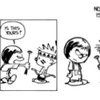The Ups and Downs of English: Pronunciation Activities for High School Students
John Fujimori
John Fujimori
Is there a need to teach pronunciation? Wong (1985) examines the need to teach pronunciation, rhythm, and stress. In several studies the pronunciation of non-native speakers was judged as "syncopated ... irritating, insistent, monotonous..." by native English speakers. When non-native speakers fail to use native intonation patterns and stress, it interferes with communication and comprehension. Clearly, tasks that improve comprehensibility should be presented to our learners.
However, there are instances when no matter how clearly sounds are articulated by the instructor, learners cannot produce the target sounds. These are not random errors in pronunciation. Rather they are the result of a combination of circumstances that interfere with learners attempts to produce unfamiliar sounds. Avery and Ehrlich (1992) identify three reasons for this: 1) sounds in English that are unfamiliar to the learner, 2) rules for combining sounds are dissimilar in the learner's native language, and 3) patterns of stress and intonation are transferred from the learner's native language.
Over the years, numerous methods have been used in teaching pronunciation. Currently, many teachers are trying to incorporate communicative teaching methods. However, according to Celce-Murcia (1987), the traditional pronunciation teaching tasks such as listen and repeat, tongue twisters, minimal pairs, developmental approximation drills, and vowel shifts and stress shift exercises, are not elements of the communicative approach, though they are sometimes useful on an individual basis.
The communicative approach, says Celce-Murcia, "presents language through tasks that focus on meaning using activities such as role playing, problem solving, and games" (p. 5). It aims for a student-centered classroom, where learners are challenged with authentic language material that is meaningful beyond the classroom. The instructor 1) identifies the problem areas, 2) finds lexical/grammatical occurrences of the problem sound, 3) develops communicative tasks, and 4) develops three or four exercises to recycle the target sounds. Avery and Ehrlich (1992) identify similar goals in the communicative approach: "1) meaningful practice beyond the word level, 2) task orientation of classroom activities, 3) development of strategies for learning beyond the classroom, 4) peer correction and group work, 5) student-centered classroom" (p. 165).
Communicative pronunciation teaching has often concentrated on suprasegmental elements rather than segmental ones. The correct pronunciation of words in isolation does not reflect normal conversational patterns. In English, intonation patterns and stress play an extremely important part in comprehensibility. Suprasegmentals operate at many levels: word, phrase, sentence, tone group, and discourse unit. Suprasegmentals are used to 1) define discourse structures, 2) provide information focus, 3) express emotion, 4) define thought groups, 5) define grammatical structures. Other functions can be seen when we consider that falling intonation is used for 1) statements, 2) wh-questions, 3) commands, 4) short sentences, phrases, and counting, and 5) tag questions when agreement is expected. Rising intonation is used for 1) yes-no questions, 2) statements used as questions, 3) wh-questions used as echo questions, and 4) tag questions expressing uncertainty. Information focus is another element of pronunciation that has an effect on communication. English uses information focus to highlight new information. Words that carry the most important information are also the same words that are stressed most strongly.
Many argue that pronunciation can not be taught. So is it possible to teach something that in linguistic terms is innate? The short answer is, "Yes!" Since learners display varying levels of L2 acquisition, every effort should be made to improve the comprehensibility of their speech. Wong (1987) discusses the importance of effective listening skills in learning pronunciation. "Students who are skillful listeners are likely to be skillful speakers." She also emphasizes the importance of intelligible pronunciation, and the students responsibility to making themselves understood.
When teaching suprasegmental aspects of English pronunciation, ways are needed to express these in writing. Avery and Ehrlich (1992) have developed a user-friendly system of dots and lines. The elegance of their system is its simplicity. The bigger dots get greater stress. The line indicates rising or falling intonation.
The following tasks were written for second year Japanese high school students to supplement their textbook lesson on clothing and patterns. The following tasks would be carried out over two or three class sessions, thereby recycling the target sounds and vocabulary.
Parts I & II present 1) rising intonation for yes-no questions, 2) rising intonation for two separate yes-no questions, and 3) falling intonation for wh-questions.
Part III develops listening skills by asking the learners to count the number of syllables they perceive hearing. This is essential for Japanese learners, because many of the English words have already been learned in a Japanese phonological context. The purpose of this task is to quantitatively differentiate English from Japanese . For example, the word stripe is pronounced with one syllable in English, but in Japanese it has five syllables - su-to-ra-i-pu.
Part IV. is similar to Part III, however the task is to identify which syllable is stressed.
Part V. is to give learners practice in identifying rising or falling intonation.
Part VI. combines the results of the communicative activities with listening for rising or falling intonation.
Part VII. is game-like in its quality. The students follow instructions and use vocabulary from previous lessons.
Part VIII. uses authentic material taken from Calvin and Hobbes.
Transcript:
The following is the teacher's transcript. Students answer the questions on the attached worksheet (Appendix 1). Parts I and II are written, and therefore do not appear on the transcript.
Part III. Listen to the words. How many syllables do you hear?
Part IV. Listen to the words. Which syllable is stressed?
Part V. Do the questions go "up" or "down"?
Part VI. Listen to the question and choose the right answer.
Part VII. Look at the pictures. Follow the instructions.
Avery, P. & Ehrlich, S. (1992). Teaching American English pronunciation . Oxford: Oxford University Press.
Celce-Murcia, M. (1987) Teaching pronunciation as communication. In J. Morley (Ed.), Current perspectives on pronunciation: Practices anchored in theory . (p. 1-13). Washington, DC: TESOL.
Wong, R. (1985). Does pronunciation teaching have a place in the communicative classroom? In J. E. Alatis and D. Tannen (Eds.). Language and linguistics: The interdependence of theory, data, and application. Georgetown University Round Table on Languages and Linguistics, 226-234.
Wong, R. (1987). Learner variables and prepronunciation considerations in teaching pronunciation. In J. Morley (Ed.). Current perspectives on pronunciation: Practices anchored in theory (pp. 17-28). Washington, DC: TESOL.
Worksheet
Part I. Conversation and Intonation Practice. Read the following correct sentences. Then practice the conversations with your partner. Say the words with dots longer and stronger .
1.
A: Are those jeans new?
B: No, they're old.
2.
A: Did you buy your sweatshirt in Japan or in Canada?
B: In Japan.
3.
A: Did you buy your sweatshirt in Japan or in Canada?
B: Yes, in Japan.
4.
A: Where did you get those shoes?
B: In Shibuya.
5.
A: Are you going to the sale next weekend?
B: Yes, and Kathy wants to go too.
6.
A: When did you wash your sweater?
B: Last weekend.
Look at the questions. When do they go "up", "down", or "up-up"? Write a simple rule to describe this.
Part II. Now you try some. Do the sentences go "up", "down", or "up - up"? Draw dots and arrows. Then practice the conversations with your partner.
1.
A: Is this bag yours?
B: No, it's hers.
2.
A: Are the socks green or blue?
B: They're green.
3.
A: Are the socks green or blue?
B: Yes, they're green.
4.
A: Where did you get buy that suit?
B: At a department store.
A: Was it on sale?
C: Yeah. It was 20% off.
5.
(At the store)
A: That's a beautiful coat. How much is it?
B: It's $50.
6.A: Do you accept credit cards?
B: Yes, we do.
Part III. Listen to the words. How many syllables do you hear?
1) 4)
2) 5)
3) 6)
Part IV. Listen to the words. Which syllable is stressed?
1) 4)
2) 5)
3) 6)
Part V. Do the questions go "up" or "down"?
(a) = up, (b) = down
1) 3)
2) 4)
Part VI. Listen to the question and circle the right answer.
1.
(a) I bought some socks.
(b) Yes, some brown shoes.
2.
(a) They're brown.
(b) Yes, black.
3.
(a) A flowered one.
(b) Yes, a dress with polka dots.
4.
(a) A light jacket.
(b) Yes, a vest.
Part VII. Look at the pictures. Follow the instructions.
Part VIII. Read the two comic strips from Calvin and Hobbes. Do the questions go "up" or "down"? Draw dots and arrows.


*note: Seven can go "up" or "down.